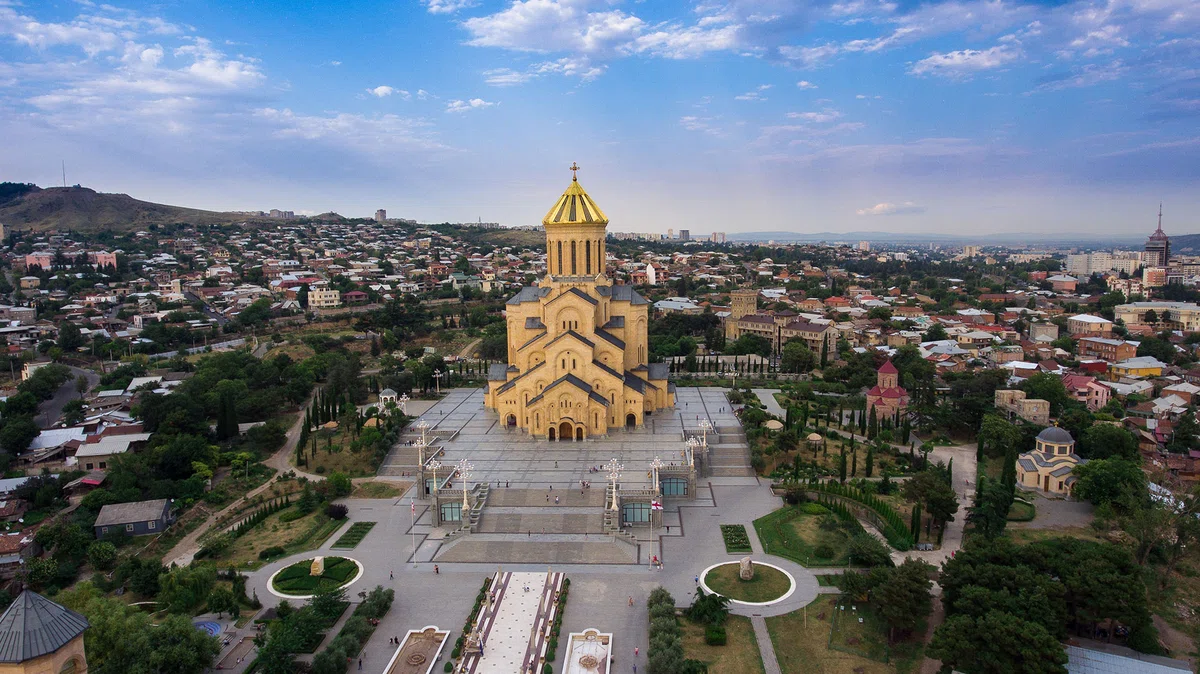
The main Christian church of the country, the Cathedral of the Most Holy Trinity or Tsminda Sameba, is one of the key attractions of Georgia.
The Cathedral of the Holy Trinity opened its doors to parishioners at the beginning of the 21st century, and the first stone during the construction of the Tsminda Sameba temple was laid in 1995. The Church of the Holy Trinity in Tbilisi is rightfully considered one of the most beautiful places in Georgia.
About the main Christian church of Georgia⬇️
Tsminda Sameba (Holy Trinity) is The Key Orthodox Christian Cathedral of Georgia. He resides in Tbilisi, on Mount Eliya, Avlabari, on the hill of St. Elijah on the left side of the Kura River. It was built according to the project of master Archil Mindiashvili. The current and most exalted cathedral of Georgia.
Despite the fact that the temple was built in an absolutely peasant and ancient in spirit area, it was expected that just its modern appearance would direct the area and give impetus to the modernization of the lands around it. It belongs to the lists of sights of Georgia that are mandatory to visit while in Tbilisi.
History
The origin of the construction of a new religious building arose in 1089 in honor of the 1500th anniversary of the Georgian Orthodox Church and the 2000th anniversary of Christ the Savior. At that moment of life, Soviet Georgia was experiencing civil unrest the most. At the beginning of 1989, the competition “Cathedral of the Holy Trinity” was announced under the leadership of the Patriarch of Georgia and the Government of Tbilisi. More than a hundred proposals got into the qualifying round, but this did not help to qualify the favorite of the competition. The work of architect Archil Mindiashvili gathered the most sympathy, and subsequently, as the most mature retrospective in spirit, the idea became the winner.
The collapse of the USSR and the crisis that came at that time suspended work on the construction of the temple for 6 years and only on November 23, 1995, the first stone of the structure was laid. During the laying of the foundation, all religious canons were observed, some religious things were hidden at the base of the cathedral, among them a handful of the holy land of Jerusalem and stones from Mount Zion. The key holy power of the Georgian Church, the Stone of Grace, is preserved in Sameba. The stone is a round smooth stone, similar to a pebble, smaller than a goose egg, ochre in color with red spots (At the moment the stone is stored in the altar of the cathedral).
The construction was carried out at the expense of voluntary donations from citizens and private businesses. The first service, in the cathedral, which was still unfinished at that time, took place on December 25, 2002. 9 years after the foundation, on the day of St. George the Victorious - who is considered the patron saint of Georgia, the consecration of the temple was carried out. The rite of consecration was performed by Patriarch of All Georgia Ilia II with the help of bishops and clerics of the Georgian Church, as well as representatives of other churches. After the consecration was completed, the throne intended for the Catholicos of Georgia was moved to the temple.
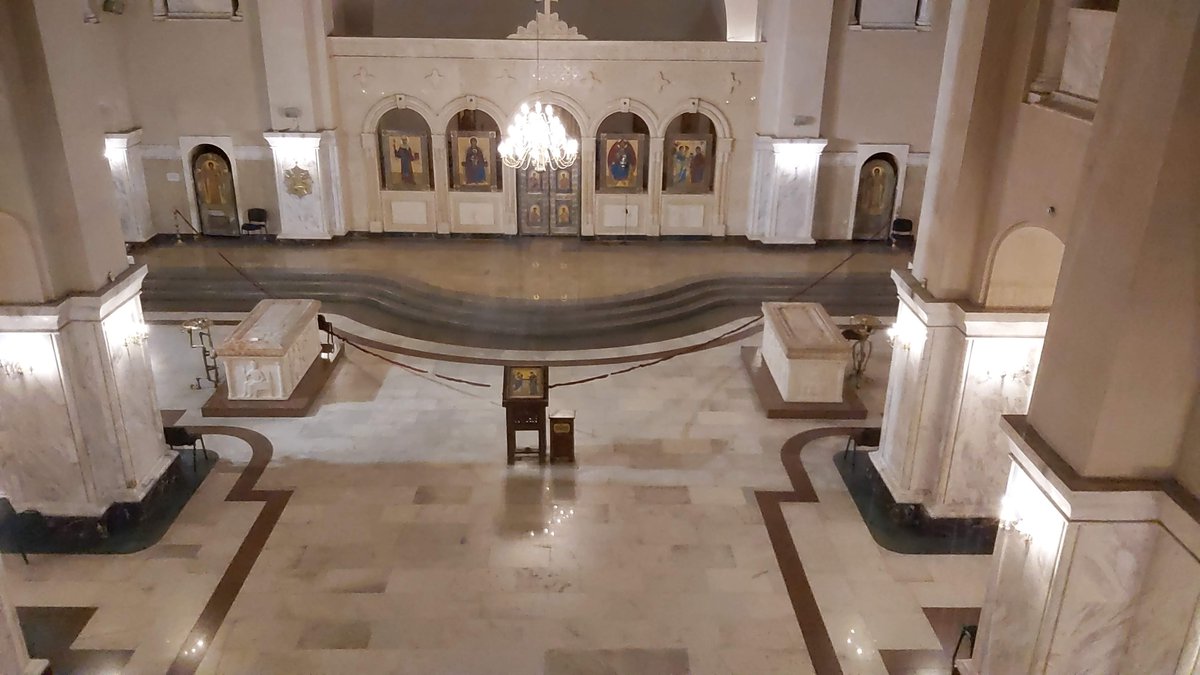
Architecture
Holy Trinity Cathedral is made in the image of a cross with one dome on eight pillars. In general, the architecture of the temple looks like a combination of ancient Georgian spiritual architecture and modern solutions. The entrances to the cathedral are located on three sides, the western, southern and northern parts of the structure. The key entrance is located in the western part of the cathedral. The height of the temple is 68 m . (without the dome cross - 7.5 m.) length from north to south - 65 m., from east to west - 77 m. The total area is more than 5000 sq.m. The capacity of the church is up to 15,000 parishioners. The height of the temple is 101 meters, but almost another 40 meters is underground.
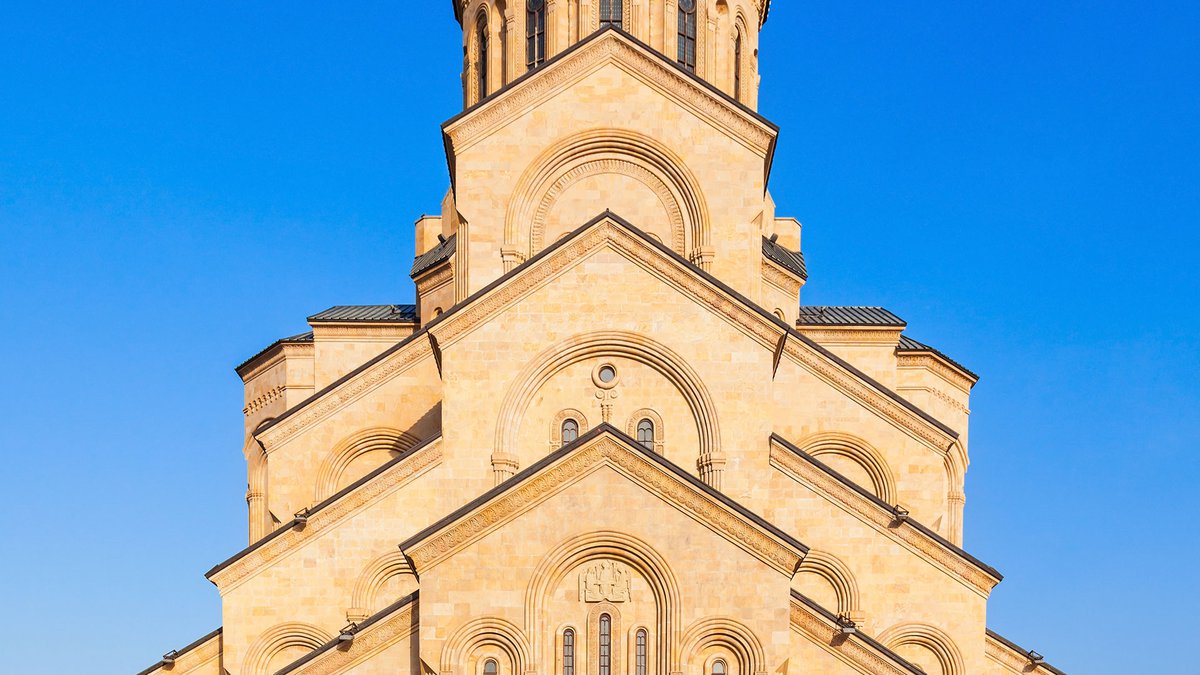
All 4 facades are strewn with various decorations and arches, as well as original and one-of-a-kind carvings. The shining dome is visible from literally every corner of the city of Tbilisi. The bells for this religious building were cast in Germany, and after installation they have both mechanical and electronic control systems. The temple is not a lonely building, it is a religious center that includes the residence of the patriarch, a monastery, a seminary and academy, an inn, as well as nine chapels, five of which are located underground.
Inside the temple there is something to see in Georgia. The floors of the temple and the altar are covered with marble limestone. The painting of the walls of the Italian, Egyptian and Greek marble of the temple with paintings and mosaics was performed under the direction of Amiran Goglidze, and Patriarch Ilia II also contributed, namely, he personally painted several icons in the temple, including the icon of the Most Holy Theotokos located at the entrance. All icons are accompanied by a description plate.
The exceptionally valuable and largest icon of the temple is the “Hope of Georgia”, more than 30 kg of gold and other jewelry, made by the ancient Georgian minankari technique, 432 saints of Georgia are present on the icon, and the value of the artifact is estimated at approximately $ 30 million. Near the altar there is a large handwritten Bible and a large antique stone with the first use of the Georgian alphabet of all found up to that time.
There is a large park around the cathedral with an abundance of landscaping facilities, and you can also admire peacocks and swans there. A distinctive feature of the temple is the night illumination, thanks to which the temple looks amazing, and due to the place on the elevation, magnificent views of the city and, in general, the most beautiful places of Georgia, as well as Mount St. David (Mtatsminda) are revealed. In general, the entire territory of the complex creates a peaceful atmosphere characteristic of monastic gardens.
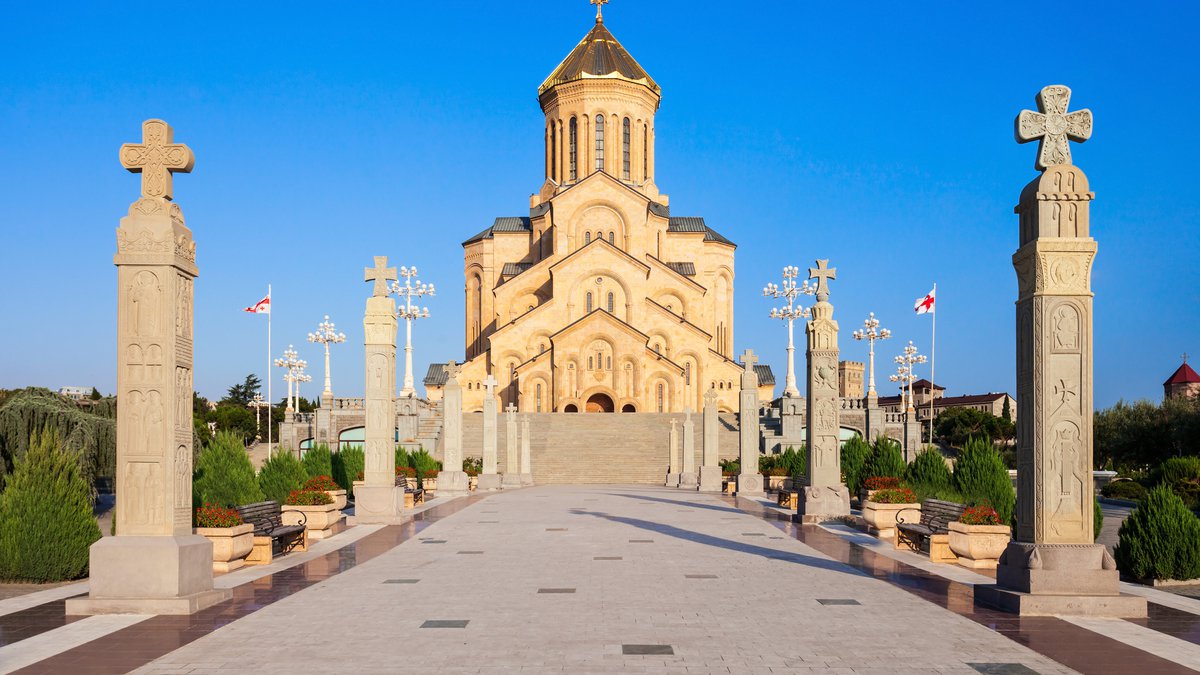
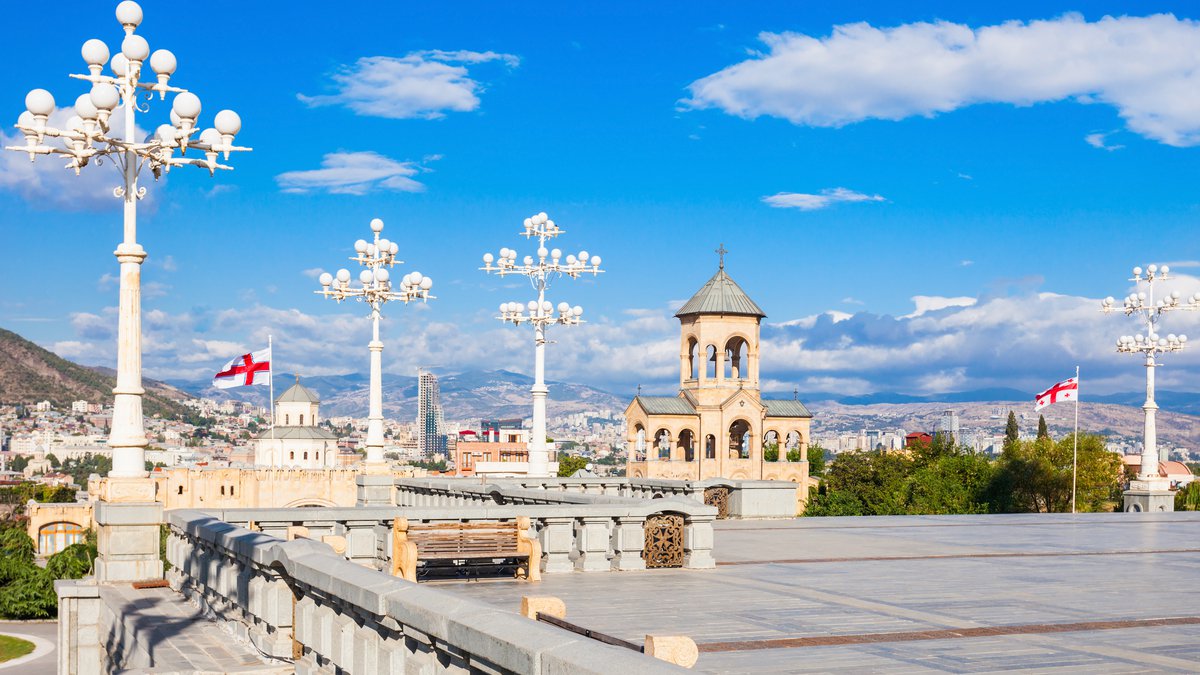












33 comments
Log in to leave a comment
Постройка собора, это была как мечта, которая воплощалась в жизнь благодаря добрым сердцам граждан и поддержке частного бизнеса. Кстати, первая служба там прошла ещё до того, как собор был полностью готов, в 2002 году. И вот, представь, через 9 лет, в честь Георгия Победоносца, его освятили.